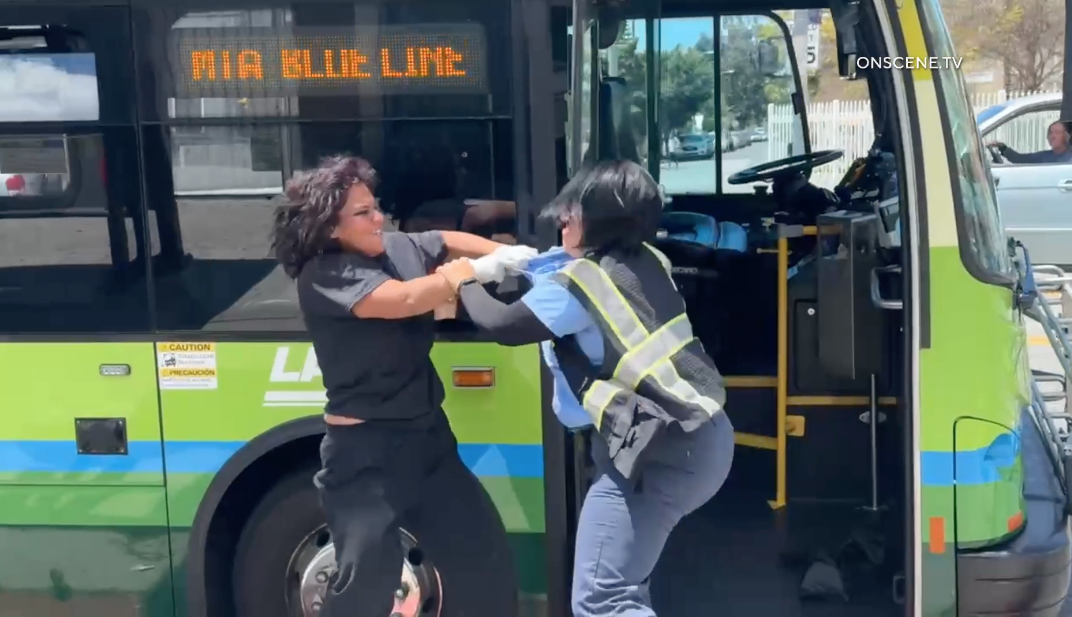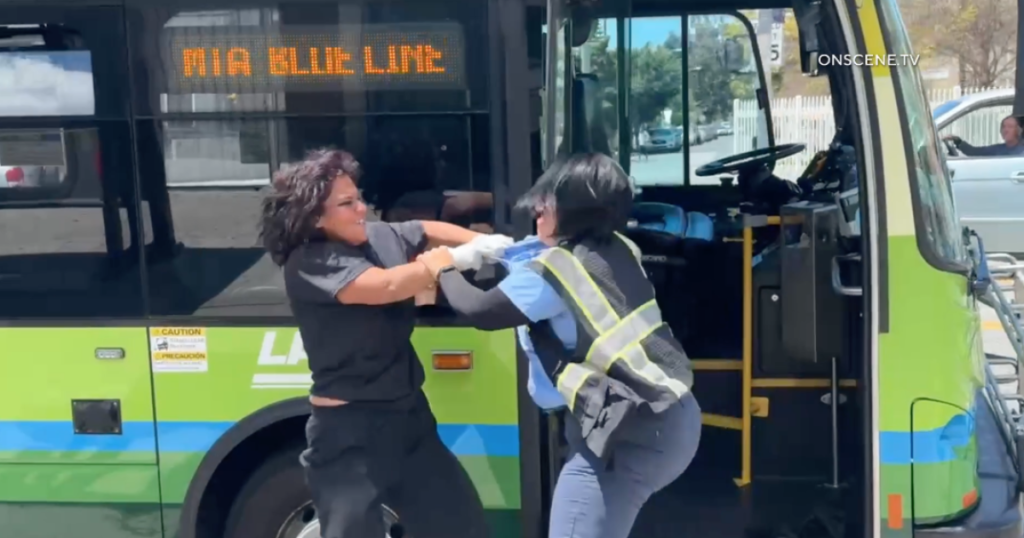
Panic buttons on some Los Angeles shuttles don’t connect to anyone, plexiglass shields around drivers aren’t designed to deter physical assaults, and union officials representing drivers say other safety measures designed to protect drivers aren’t working.
“More is needed,” said Lourdes Garcia, secretary and chief officer of the Teamsters Local 572 union, which represents the city’s DASH shuttle drivers. “It’s time to be honest about what’s going on.”
A series of violent attacks has raised concerns about the safety of bus drivers, prompting the Los Angeles County Metropolitan Transportation Authority to declare a state of emergency over the attacks.
At a June 5 Los Angeles City Council Transportation Committee meeting, Los Angeles Department of Transportation officials touted panic buttons on DASH buses, plexiglass around drivers, training, cameras and radios as measures to ensure driver safety.
But drivers and union officials say many of the safety features don’t work as expected. For example, a panic button that a driver can press does not connect to the dispatch center or any emergency services. Instead, the button plays a recording directing passengers or others to call 911.
“You might as well honk your horn,” Garcia said. “You have to rely on someone, a good Samaritan, to hear it, otherwise, if you’re on the highway, someone might not hear it.”
Concerns about the safety of bus drivers have grown after a number of attacks on drivers, some of which were caught on video.
In one incident on May 5, a female passenger assaulted a Metro bus driver at Central and Jefferson avenues.
In the video, the woman pushes and punches the female driver, who then kicks the woman and tries to pull her off her back.
In March, a passenger armed with an air gun hijacked a Metro bus and crashed it into several cars and the Ritz-Carlton Hotel in downtown Los Angeles.
In April, another Metro driver was stabbed in Willowbrook during an attack that was captured on film. The driver can be heard shouting: “Help me! Help me!” during the attack.
Concerns about safety prompted hundreds of workers to call in sick in May, causing delays on dozens of subway bus lines.
Much of the attention has been on Metro buses, but officials have also expressed concerns about safety measures taken by DASH drivers, who operate free shuttle services in 27 communities, including downtown Los Angeles. DASH buses connect to the county’s Metro Transit system.
Los Angeles police have been patrolling DASH buses until their contract with the agency expires in 2021. Officials said there were plans to replace them with security ambassadors, but they were never implemented.
Adriana Avila, president of Teamsters 572, told the city’s Transportation Commission that drivers complained that safety training sessions were not being held and that bus radios were not working in several areas of the city.
Some radios simply didn’t work, she said at the Jan. 5 meeting.
Officials noted that the plexiglass around drivers was placed there as a precaution against the COVID-19 virus, not to deter unruly passengers.
“When you’re out there, you’re on your own,” Garcia said.
A spokesman said the LADOT, which oversees DASH buses, is currently working to resolve the radio issue.
“Ensuring the safety of drivers and passengers on our buses is LTD’s top priority,” agency spokesman Colin Sweeney said in an email. “In some cases, drivers have reported difficulties with connectivity in certain areas of the city, such as hillsides and canyons, and the Lado Department of Transportation is currently evaluating technical solutions to maintain communication with transit vehicles at all times.”
Sweeney also added that buses undergo pre-trip inspections before each shift to ensure drivers can communicate with dispatch and emergency buttons are working properly.
But that’s not enough, Councilmember Traci Park, vice chair of the city’s transportation committee, said at the June 5 meeting.
“We have removed our law enforcement partners from transit and [the Department of Transportation’s] “In this case, there was never getting around to replacing them with ambassadors or anything other than plexiglass and panic buttons,” Parker said. “I feel like our passengers and operators were left out there to fend for themselves. Out, unprotected, radios, panic buttons and plexiglass everywhere, none of that solves the problem.
City officials said they plan to arrange de-escalation training for drivers and review safety measures that can be taken to protect drivers, with discussions involving the Los Angeles Police Department, the Los Angeles Department of Transportation and union officials.
Garcia said union officials and drivers are encouraged that the Lado Department of Transportation and City Council are now more focused on driver safety and on-vehicle violence, but she noted that many of the issues being addressed were raised by drivers months ago.
“We’ve been telling you this,” she said. “We welcome the fact that they finally have a sense of urgency to address this issue.”

